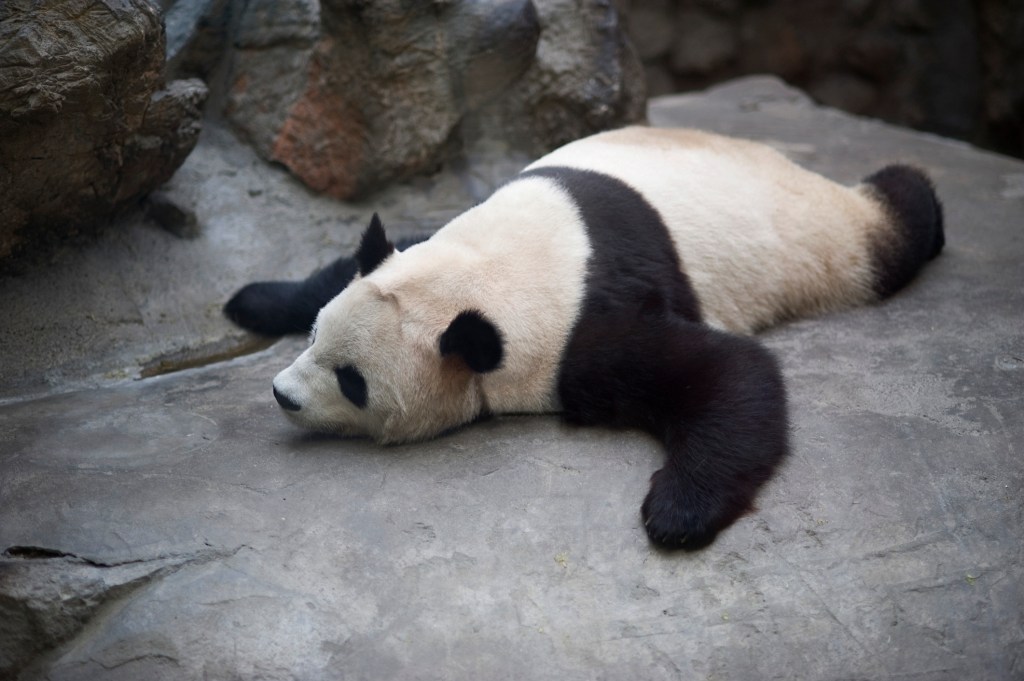Giant pandas in captivity may be suffering from ‘jet lag’
Giant pandas living in captivity may be suffering from a type of “jet lag,” according to a new study.
The animals, like humans, have a circadian rhythm – an internal body clock that is regulated by cues from the environment and dictates when to do certain activities, like sleeping and eating.
But when the environmental cues do not match that of their natural habitat, the pandas may start behaving more erratically – which could have a negative impact on the already-endangered species, according to a study published Monday in the Frontiers in Psychology journal.
“Animals, including humans, have evolved rhythms to synchronize their internal environment with the external environment,” lead study author Kristine Gandia, a PhD student at the University of Stirling in Scotland, said in a statement.
“When internal clocks are not synchronized with external cues like light and temperature, animals experience adverse effects,” she said. “In humans, this can range from jet lag to metabolic issues to seasonal affective disorder.”
She said she sought out, with 13 other scientists, to see how a change from their natural environment would affect the giant pandas, explaining to CNN that jet lag occurs when there is a “potential lack of ability to fully adapt to environmental conditions and cues” — not because someone is changing time zones.
Gandia said she and her team decided to focus on the effects of a change of environment on giant pandas because they live cyclical lifestyles – migrations occur in the spring because the pandas eat a specific type of bamboo and have to search for shoots. Mating also occurs in the spring.
Their treatment in captivity also lent itself well to the study, Gandia said.
“Pandas are very good animals to focus on. They are very popular in zoos, and there are a lot which have ‘panda cams’ so we can see how their behavior changes across different latitudes,” she explained.
The researchers monitored 11 giant pandas at six different zoos across the world, all of which were born in captivity.
The study did not specify which zoos the researchers were examining the giant pandas at, but it was split between those that were in the same latitude as their natural habitat in China and those outside that range.
As part of the study, observers watched the pandas every month for a year, jotting down how their behavior changed.

“We recorded essentially the entire repertoire of giant panda behavior, trying to account for behaviors that are positive, neutral and negative indicators for welfare,” Gandia told CNN.
“So this would include behaviors like play, grooming and the sexual-related behaviors as positive behaviors; and drinking and urinating/defecating as neutral animal behaviors; and several abnormal/stereotypic behaviors as negative behaviors – with pacing being the most common,” she explained in an email to CNN.
The 13 researchers found that each of the pandas displayed three peak activity times over a 24-hour period, including the night time, just as they would in their natural habitats.
Sexual behavior was only recorded during the daytime hours in adult pandas, which is likely an easier time for them to find mates in the wild.
But those living in captivity outside of their home latitude were less active, with Gandia speculating that it may be because the daylight hours and temperature cues differed from those of their natural habitat.
“When giant panda are housed at higher latitudes – meaning they experience more extreme seasons than they evolved with – this changes their levels of general activity and abnormal behavior,” she said.
Read the full article Here


